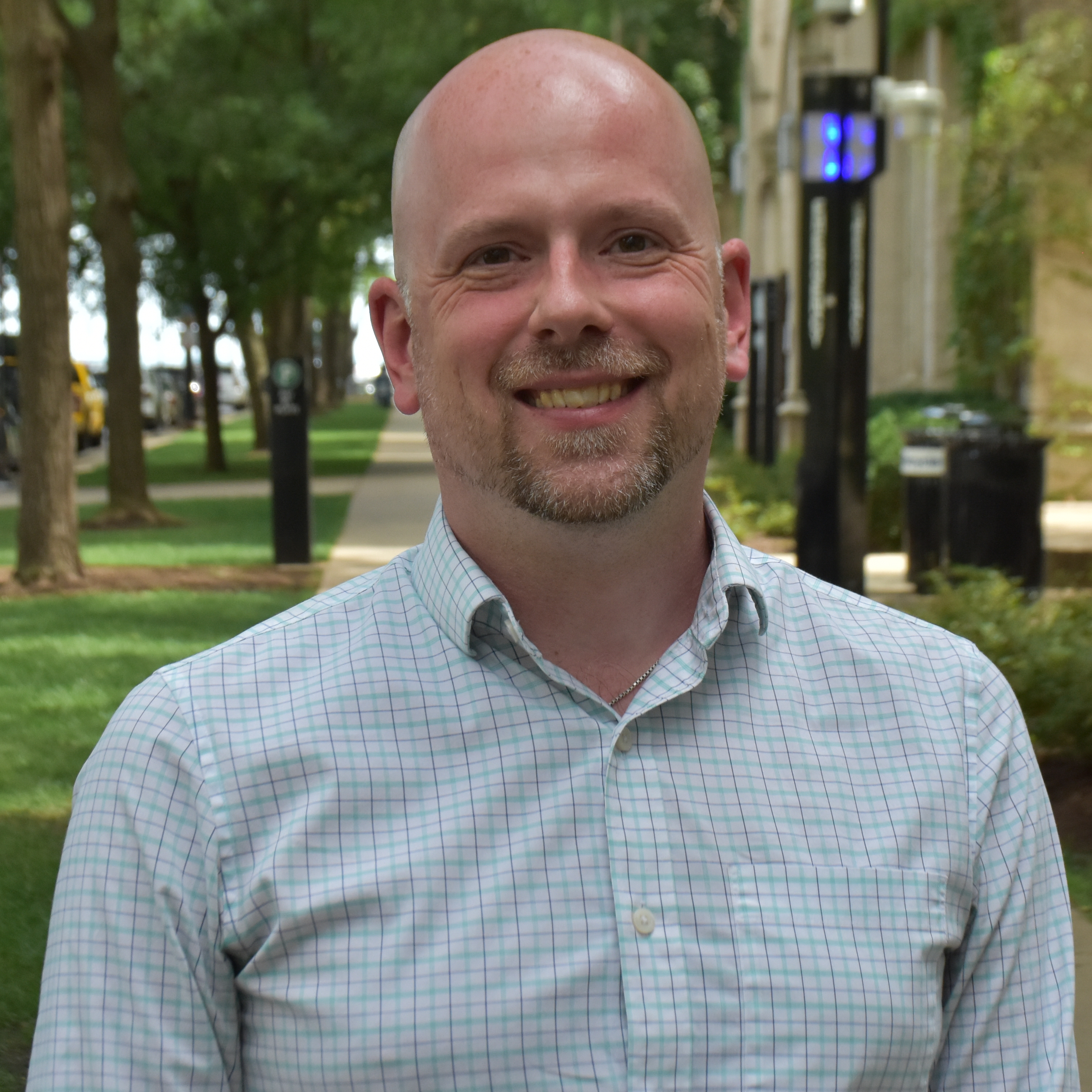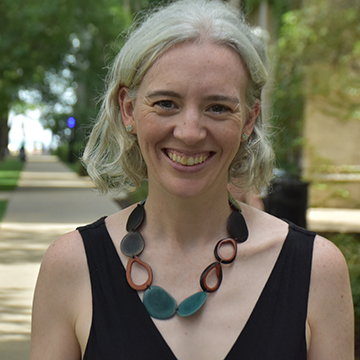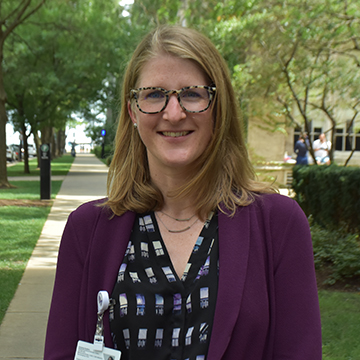Three Physician-Scientists Named KL2 Scholars
The 2021 cohort of KL2 scholars are united by their dual backgrounds in clinical and research settings. Over the next two years, their experiences working with patients and in the lab will help them conduct novel translational, multidisciplinary, clinical research.
The Northwestern University Clinical and Translational Sciences (NUCATS) Institute KL2 program will provide mentorship, education, and career development opportunities to Kyle MacQuarrie, MD, PhD, who is conducting research on the pediatric cancer rhabdomyosarcoma; Colleen Peyton, DPT, who is studying infant motor disorders; and Anna Pfenniger, MD, PhD, who is investigating atrial fibrillation.
Programs such as the KL2 are critical during a time when MacQuarrie says there are often high barriers to entry keeping many people from breaking into research.
“I was so excited when I got notice that I had been awarded the KL2 because I think that there is a bottleneck in developing physician scientists. We certainly see that in pediatrics, which is my specialty,” MacQuarrie says. “Programs like this that can help support people as they begin their journey to fully independent researcher; it cannot be overemphasized how important they are to people like myself, who are in that junior or early phase of their careers.”
The KL2 program serves to resolve a major hurdle that often exists at the beginning of research careers: receiving grants to conduct research requires research experience and mentorship. MacQuarrie’s KL2 project centers around pediatric cancer rhabdomyosarcoma and its nuclear organization.
“We know that in normal skeletal muscle, the structure, neighborhoods, and how the nucleus is constructed in the three dimensions really matters to how muscle develops,” he says. “So that suggests to me that it is really going to matter when it comes to how the cancer of muscle develops and behaves.”

Programs like this that can help support people as they begin their journey to fully independent researcher; it cannot be overemphasized how important they are to people like myself, who are in that junior or early phase of their careers.”
With his mentor, Vadim Backman, PhD, MacQuarrie is attempting to take a novel approach to the study of rhabdomyosarcoma to hopefully improve diagnosis and prognosis, in addition to identifying new treatments.
“When I think about scientific advancement, I had a mentor who in the past told me the two best ways to achieve it are to think about asking a question that no one else has ever asked, and looking at something in a way that no one else has ever looked,” says MacQuarrie. “And, so, part of our goal — Dr. Backman and myself — is to use some of the tools that he has developed in his lab to look at pediatric cancers in a way that no one else has ever looked before.”
Unexpected Transition to Research
Colleen Peyton began her career as a physical therapist who didn’t anticipate getting involved in research. Her KL2 project centers on studying the motor behavior of preterm infants with brain injury.
“My path to an academic career is less traditional because I began as a clinician and became interested in research over time,” Peyton says. “The KL2 is a wonderful opportunity for me to take time to learn from mentors and didactic courses to improve and refine my skills as a researcher. It means more to me now, as opposed to when I first graduated, because I can ask more informed questions and focus my studies by applying the experiences I have learned in my clinical career.”
I worked in a region of Chicago where developmental services were scarcely available to infants in the community after they left the NICU. This scenario really made me interested in the early assessment of infants so that I could better triage the children who would have the greatest need for intervention. ”

When Peyton graduated as a physical therapist from the MGH Institute of Health Professions in Boston, she had no interest in research. But after working in the neonatal intensive care unit in Chicago, she began to ask questions about how preterm infants were assessed and cared for.
“I worked in a region of Chicago where developmental services were scarcely available to infants in the community after they left the NICU,” Peyton says. “This scenario really made me interested in the early assessment of infants so that I could better triage the children who would have the greatest need for intervention. I learned that I really loved asking questions that can help benefit patients and that research was what I wanted to focus on in my career.”
Her KL2 project focuses on understanding and tracking how infants move in their first few months after they are born preterm. With the guidance of her faculty mentor, Julius Dewald, PhD, she will study infants with and without brain injury to see how early injury to a developing brain may impact movement, particularly the ability to isolate individual joints.
“By better understanding the origins of movement in infants born preterm, we hope to use this information to help design age-specific and targeted treatments for children who go on to develop motor challenges like cerebral palsy,” Peyton says.
Hands-On Approach
Anna Pfenniger realized her fascination with cardiology when she was in medical school at the University of Geneva in Switzerland.
Her research focuses on atrial fibrillation, which is the most common abnormal heart rhythm and can lead to strokes. She seeks to learn more about the role of abnormal small blood vessels, called endothelial dysfunction, in atrial fibrillation.
“This area interests me for several reasons: as a cardiac electrophysiologist, taking care of patients with atrial fibrillation, I am confronted by the limitations of our treatments for this disease every day,” says Pfenniger. “I am also reminded daily that we don't know a lot about this disease, even though it is so common. My PhD focused on how blood vessels work, so this combines my prior expertise with my current clinical interests.”

It can be challenging to transition from the status of trainee, especially a clinical trainee, to not only an independent physician, but also a scientist with a separate lab and team. The KL2, by providing support, mentorship, and education, gives the necessary foundation for a successful career.”
Pfenniger says that she is honored to be part of the KL2 program, as she knows current and previous KL2 scholars who inspire her. The program’s general support infrastructure and working with faculty mentor, Rishi Arora, MD, is significant for Pfenniger.
“I see it as a great stepping stone, or a trampoline, maybe,” she says. “It can be challenging to transition from the status of trainee, especially a clinical trainee, to not only an independent physician, but also a scientist with a separate lab and team. The KL2, by providing support, mentorship, and education, gives the necessary foundation for a successful career.”
The KL2 program allows scholars to pause from the often competitive and drawn-out grant process, which provides time for Pfenniger, Peyton, and MacQuarrie to focus on their research without worrying about the future just yet.
“I appreciate that cardiac electrophysiology is a procedural specialty, meaning we work with our hands a lot, while heavily relying on critical thinking and integration of a lot of data on the spot to guide our hands,” says Pfenniger. “After completing my clinical training, this love for cardiac electrophysiology is stronger than ever.”
Research reported in this publication is supported, in part, by the National Institutes of Health's National Center for Advancing Translational Sciences, Grant Number KL2TR001424.
Written by Olivia Lloyd




